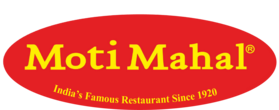One of northern India’s oldest eateries Moti Mahal, credited with creating the present-day version of tandoori chicken, dal makhani and butter chicken in 1920, has entered the Indian kitchen with a range of ready-to-eat processed food.
The instant platter comprises dal, butter gravy, vegetable biryani, aloo jeera and pindi chana – five popular traditional non-meat dishes in demand at Indian homes across the world.
The range, Moti Mahal’s Ready-To-Eat, a part of its Tandoor Trail initiative, was launched by columnist and food writer Vir Sanghvi, MP Mohammed Azharuddin and Moti Mahal managing director Monish Gujral in the capital late Wednesday.
Moti Mahal’s instant food added to the burgeoning ready-to-eat market in India, estimated at Rs.800 million annually and shows potential for growth, given the large consumer base. Reports cite that the ready-to-eat food market in India was growing at a compound annual growth rate of 15 percent for the last five years.
‘We use a special technology for our ready-to-eat food developed by NASA that enables us to prepare them without preservatives. It has a shelf life of 12 months from the date of manufacturing,’ Gujral said. ‘We researched the products for five years before launching them,’ said Gujral, who has carried the 88-year-old family brand to a new level by expanding overseas. The eatery, which began as a small outlet in Pakistan’s Peshawar in 1920 by chef Kundan Lal Gujral, came to the capital in 1947 after Partition.
Kundan Lal created culinary history when he conceived the tandoori food cooked in a special oven called the tandoor by digging a pit right in the middle of his eatery in Peshawar to grill meat and vegetables marinated with spices. Upon arriving to India, a penniless Kundan Lal chanced upon an abandoned shed in Dariyaganj. ‘Some inner voice told him that it was the place to build a small eatery,’ the documents at the family’s archives said. Tandoori cuisine subsequently became one of the most sought-after Indian food worldwide. ‘We are positioning our brand Moti Mahal as a domestic food label to the consumers,’ Gujral said.
He plans to expand the convenience range to at least 16 products, including non-vegetarian food, in a year. The chain has four stand-alone eateries and 100 franchises. The managing director of Moti Mahal brand said an ‘extensive consumer research programme before launching the products showed that the timing was right’. The report showed that ‘women today had very little time to involve in regular household chores like cooking and it was driving the growth of convenience food like ready-to-eat products in India that was witnessing fragmented meal patterns’.
The Indian ready-to-eat food market was poised to double its size by 2014, the survey revealed. Food writer and critic Vir Sanghvi said: ‘It is wrong to say Indian cuisine is not innovative.’ ‘There’s the ready-to-eat butter gravy, dal (lentil broth) and pindi chana (curried chick pea) created by Moti Mahal. Earlier, we had to go out for dinner, but now we get it at home. It shows how much India has changed,’ he said.
‘Kitchens of India are being sold worldwide, especially in the NRI market in US that crave for Indian food,’ Sanghvi told IANS.’I like the Dal Bukhara of ITC and two products created by a Canadian company, McCain Food – aloo tikki and a three-minute idli which is sold in a frozen form,’ he said when asked to share his favourite ready-to-eat food with readers. ‘However, it is not so successful as the aloo tikki, but good enough. So far, I have found most of the ITC stuff good enough,’ Sanghvi said.



